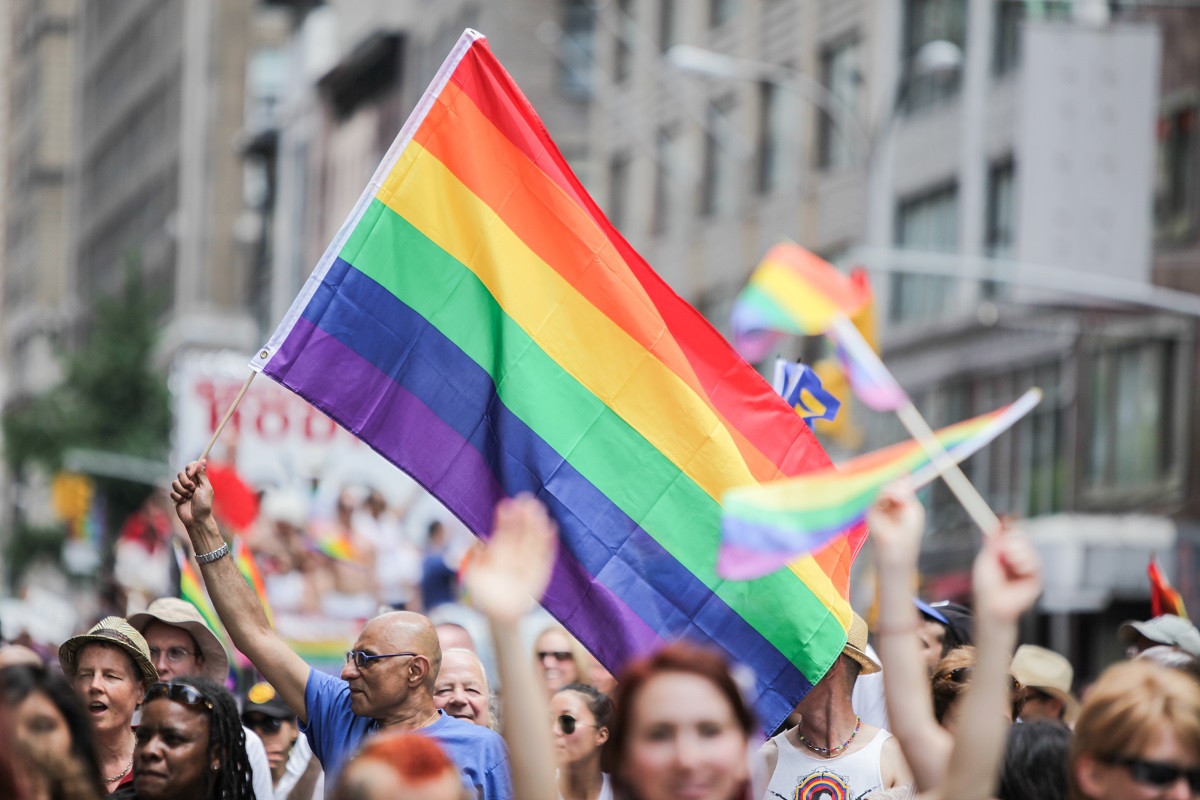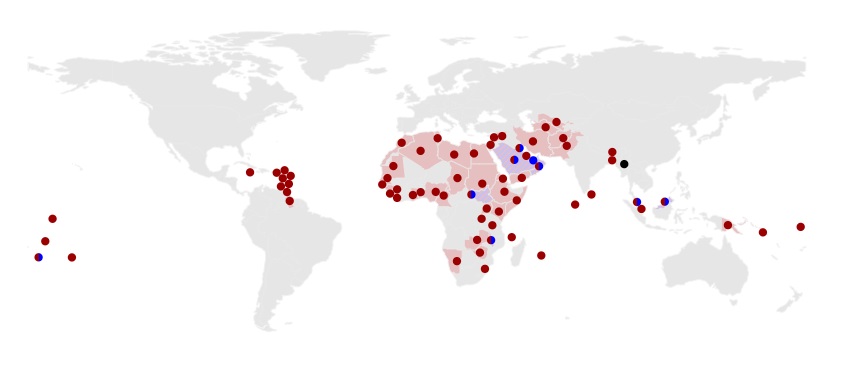
Over the last several years, LGBTQ immigrant rights in the United States have changed significantly. A progressive cultural environment and several court cases have helped to equalize treatment of same-sex marriage in the U.S. immigration system and protect the basic rights that many heterosexual couples take for granted.
While the gay, lesbian, bisexual, and transgender communities continue to be persecuted throughout much of the world, LGBTQ rights are catching up in the United States. The goal is that persons who identify as LGBTQ are simply treated as any other individual. That isn’t to say that persons who identify as LGBTQ don’t continue to have unique challenges when immigrating.
LGBTQ Immigrant Rights History
Not long ago, LGBTQ immigrant rights in the United States were non-existent. In fact, being gay was treated as a ground of inadmissibility. If you were known to be gay, lesbian, bisexual or transgender, you most likely would not be admitted to the United States as an immigrant. In fact, the Immigration and Nationality Act of 1951 considered being LGBTQ a “mental defect.” Later, the language changed to call it a “deviation.” Immigration policy still considered it a medical reason to disqualify immigrants to the U.S. Much has changed.
Refugee Act of 1980 Reformed the Way We Treat LGBTQ
The Carter administration passed the Refugee Act of 1980. Thanks to this law, things started to change. The way that this law defined "refugee" opened the door for LGBTQ people to apply for protected status. This law defined a refugee as “someone outside of their home country unable or unwilling to avail themselves of the protection of that country because of persecution or a well-founded fear of persecution on account of race, religion, nationality, membership in social group, or political opinion.” After that, many Supreme Court cases have said that being LGBTQ is “membership in a social group,” which gave people asylum on that basis.
Major Court Victories for LGBTQ Community
Over time, Americans and their leaders have become more open-minded about social issues. In fact, President Obama said his views on gay marriage had "evolved." The courts followed. LGBTQ immigrant rights have benefited.
The three most important Supreme Court decisions in favor of LGBTQ immigrant rights:
- U.S. v. Windsor (2013): Many states had made same-sex marriage legal at this point. The Supreme Court decided in a 5-4 vote that not allowing same-sex couples to marry was unconstitutional. The 5th Amendment of the Constitution calls for equal protection for all Americans. The Court also said that marriage as a union between a man and a woman was unconstitutional. This definition of marriage was in the Defense of Marriage Act of 1996.
- Obergefell v. Hodges (2015): In another 5-4 vote, the Supreme Court said the right to marry is fundamental. It also said that the 14th Amendments protects liberties like the right to marry. This landmark case made same-sex marriage legal in all U.S. states and territories.
- Bostock v. Clayton County (2020): This is the most recent victory for LGBTQ rights. The question was whether an employer can fire someone if they identify as LGBTQ. In a 6-3 decision, the Court said you cannot discriminate against LGBTQ people at work for that reason. It also said LGBTQ discrimination is on the basis of sex, which is unconstitutional. Many states didn't have protections for LGBTQ individuals at work before this decision. Because it's a Supreme Court decision, it applies to all states.
Immigration for Same-Sex Fiancés
Same-sex marriage in now legal in every U.S. state, making it easy for LGBTQ couples to utilize the fiancé visa process. The fiancé visa, officially known as a K-1 visa, is used by a foreign national fiancé to enter the United States for the purpose of marrying a U.S. citizen.
It’s perfect for those who haven’t been able to marry in their countries of origin. Once in the U.S., the foreign national can adjust status to become a permanent resident.
Prior to the Obergefell ruling, there was an additional burden on same-sex couples. The U.S. citizen K-1 petitioner was required to prove that the marriage to the foreign fiancé would take place in a state where marriage was legal. As a result, an attorney was often necessary. It was expensive to hire an attorney, prove the marriage would take place in a legal jurisdiction and then actually have the marriage in an alternative state. Now, based on the Supreme Court ruling, the Constitution requires all states to license same-sex marriages. Thus, same-sex marriages are treated identically to opposite-sex marriages with no additional paperwork or hassles.
The fiancé process begins with the U.S. citizen filing Form I-129F, Petition for Alien Fiancé. As long as the standard immigration requirements are met, USCIS will enable the U.S. citizen’s fiancé to enter the United States for the purpose of marriage.
LGBTQ Immigrant Rights for Married Couples
LGBTQ couples that are already married may also utilize the U.S. immigration system as would any other opposite-sex married couple. A U.S. citizen or permanent resident may petition to have their LGBTQ spouse come to the United States with an immigrant visa (green card).
But there is an important distinction — Only a relationship legally considered to be a marriage in the jurisdiction where it took place establishes eligibility as a spouse for immigration purposes. In other words, the marriage needs to happen in one of the countries where same-sex marriage is legal. For example, if the marriage took place in Saudi Arabia, where same-sex marriages are clearly forbidden by law, the marriage will not be considered legal. In this example, the couple would need to utilize the fiancé visa process to get married in the U.S. or get married in another country where same-sex marriage is legal. A proxy marriage may be an option, but USCIS does require the marriage to be consummated to consider it legal.
The process begins with the U.S. citizen or permanent resident filing Form I-130, Petition for Alien Relative. As long as the immigration requirements are met, USCIS will enable the spouse to enter the United States as a green card holder.
Children of Same-Sex Couples
Immigrant rights extend to the children of LGBTQ couples. A U.S. citizen or permanent resident can petition to have a same-sex spouse immigrate to the United States. However, any of the foreign national’s children may be eligible to immigrate as well.
For example, a gay U.S. citizen meets and marries a Dutch citizen. That Dutch citizen is the father of two small children that need to stay with him. The U.S. citizen petitions the spouse for an immigrant visa (CR1 or IR1) and his step children for an immigrant visa (IR2 or CR2). In other categories, step children acquired through same-sex marriage can qualify as beneficiaries (F2A) or for derivative status (F3, F4, E1-E4, or DV). As with an opposite-sex marriage, the same-sex marriage must have taken place before the child turned 18.
LGBTQ Immigrant Rights for Refugees and Asylees
LGBTQ immigration through refugee and asylum status is also getting more attention as a viable means to immigrate to the United States. Refugee or asylum status may be granted to an individual seeking protection because they have suffered persecution or fear that they will suffer persecution due to race, religion, nationality, membership in a particular social group or political opinion.
There’s not a lot of data for this specific group, but collection started in 1997. Back then, only 100 people had applied for asylum or refugee status under this category. According to NBC News, about 4,400 people applied for asylum in the U.S. based on their LGBTQ status between 2007-2017. Many applicants come from places where same-sex marriages, or homosexuality itself, are illegal. Same-sex marriage is illegal in all but 29 countries. Many countries in Africa, the Middle East, and the Caribbean have laws where being LGBTQ is a crime.

What’s Ahead for LGTBQ Immigration
In the past few years, some LGBTQ asylum seekers have faced trouble because they were not married at the time of immigration. If a couple is not married, each application is individual, even if the individuals have been in a long-term relationship. Thus, each applicant would need to qualify separately LGBTQ couples may go to different detention centers. Some transgender women in detention centers have reported abuse and discrimination.
America’s Declaration of Independence says liberty is a right. That includes loving who you love and expressing your identity freely. And while things are not perfect in the U.S., for many LGBTQ individuals, America truly is the land of the free.
About CitizenPath
CitizenPath provides simple, affordable, step-by-step guidance through USCIS immigration applications. Individuals, attorneys and non-profits use the service on desktop or mobile device to prepare immigration forms accurately, avoiding costly delays. CitizenPath allows users to try the service for free and provides a 100% money-back guarantee that USCIS will approve the application or petition. We provide support for the K-1 Fiancé Petition (Form I-129F), Spouse Petition (Form I-130), Adjustment of Status Application (Form I-485), and several other commonly used USCIS forms.
Want more immigration tips and how-to information for your family?
Sign up for CitizenPath’s FREE immigration newsletter and
SAVE 10%
on our immigration services







